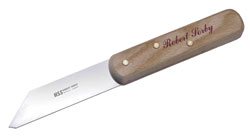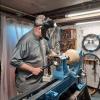I need a new Parting tool. I have busted two Sorby's over the years. I guess I was hanging them too far over the rest. The last one was the result of a catch, while hanging it too far over the rest. I need a strong one.
What manufacturer's do you recommend. I don't want to make handles. So I need a handled one.
Thanks for your help.
RP




 Reply With Quote
Reply With Quote







